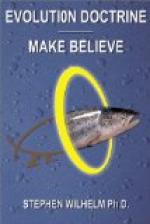Let us look back over the history of mathematics. The primitive human individual did not need to count. He dealt with things as he met them, and he disposed of them singly and individually. A squirrel does not count the nuts it gathers; it simply accumulates a store, and it perishes or survives according to its instinctive ability to do this. Just so was primitive man. The savage, when he organized the first formed tribes, learned to count the days of a journey and the numbers engaged on opposite sides in battle. He employed the “score” of his fingers and toes, and our use of this very word is a survival of such a primitive method of counting. The abacus of the Roman and Chinese extended the scope of simple mathematical operations as it employed more symbolic elements. With the development of Arabic notation capable of indefinite expansion, the science progressed rapidly, and in the course of long time it has become the higher calculus of to-day. The conceptions of geometry have likewise evolved until to-day mathematicians speak of configurated bodies in fourth and higher dimensions of space, which are beyond the powers of perception, even though in a sense they exist conceptually. The behavior of geometrical examples in one dimension leads to the characteristics of bodies in two dimensions. Upon these facts are constructed the laws of three-dimensional space which serve to carry mathematical thought to the remoter conceptual spaces of which we have spoken. It may seem that we are recording only one phase of mental evolution, but in fact we are dealing with a larger matter, namely, with the progressive evolution of knowledge in the Kantian category of number.
Natural science began with the savage’s rough classification of the things with which he dealt in everyday life. As facts accumulated, lifeless objects were grouped apart from living organisms, and in time two great divisions of natural science took form. Physics, chemistry, astronomy, geology, and the like describe the concrete world of matter and energy, while the biological sciences deal with the structure, development, interrelationships, and vital activities of animals and plants. Surely knowledge has evolved with the advance in all of these subjects from decade to decade and from year to year. And just as surely must evolution continue, for the world has not stopped developing, and therefore the great principles of science must undergo further changes, even though they are the best summaries that can be formulated at the present time.
Philosophy deals with general conceptions of the universe. When we look back through the ages we find men picturing the world as an aggregate of diverse and uncorrelated elements—earth, air, fire, and water. The synthesis of facts and the construction of general principles down through Bacon, Newton, and Schopenhauer to modern world conceptions results in the unification of all—“the choir of heaven and furniture




